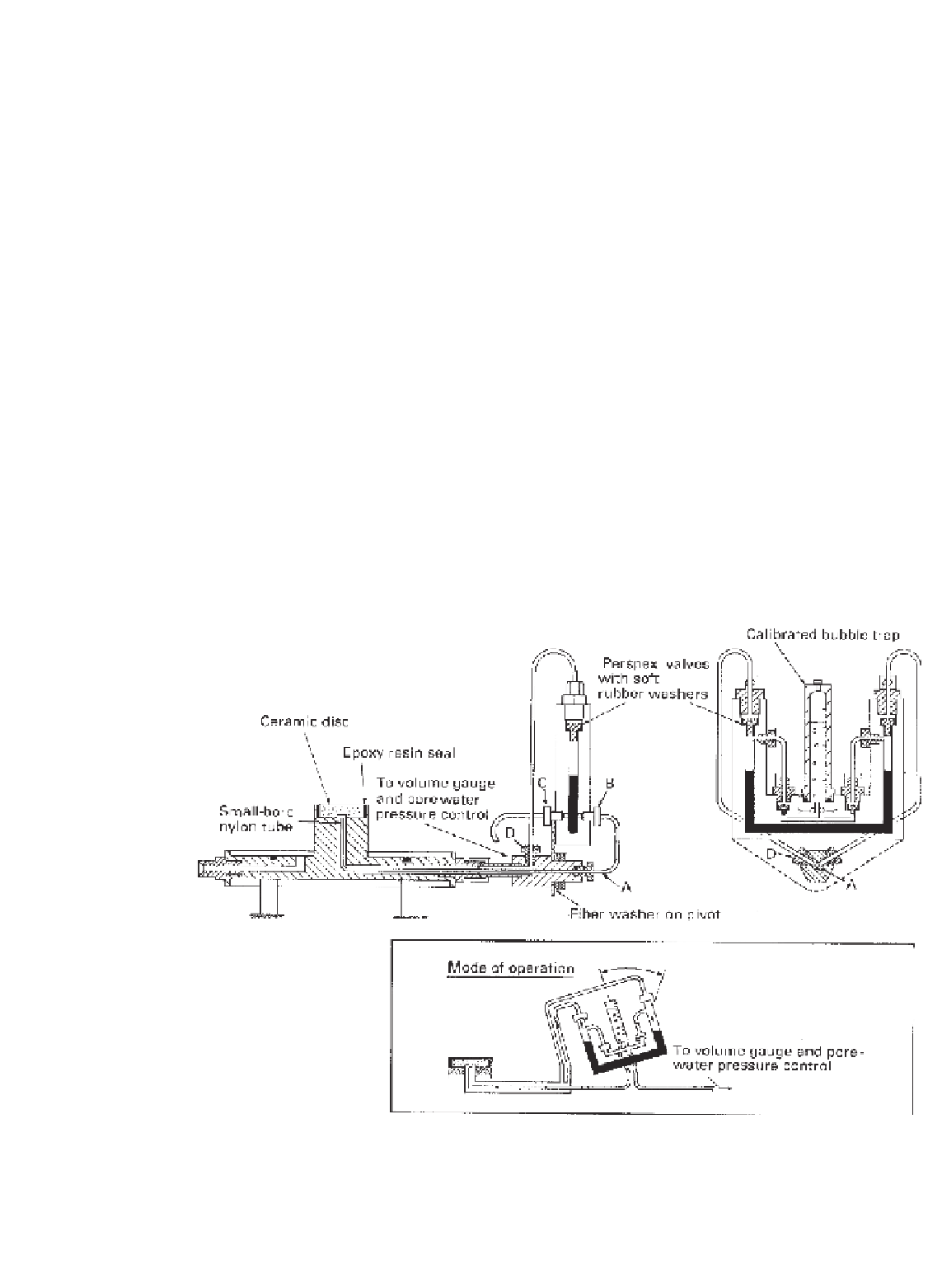Environmental Engineering Reference
In-Depth Information
The volume of air diffusing through a high-air-entry disk
over a period of several days can, in some cases, exceed
the total volume of water in the soil specimen (Fredlund,
1973a). A drained test extending more than one day should
take into account the volume of diffused air if it is necessary
to know the change in water content or degree of saturation
of the soil (Fredlund, 1975c).
The time required for air diffusion depends on the thick-
ness of the high-air-entry disk and the matric suction being
applied or measured. Attempts have been made to theoreti-
cally calculate the volume of diffused air; however, there are
many factors affecting the diffusion rate, making a theoreti-
cal prediction difficult. Consequently, it is better to measure
the volume of diffused air in laboratory experiments.
and the “diffused air volume indicator (DAVI),” consisting
of an inverted burette (Fredlund, 1975c).
Figure 9.18 shows a perspex bubble pump connected to the
compartment below a high-air-entry disk in a triaxial cell. A
U-tube containing mercury is used to circulate water through
the base plate in order to flush and collect diffused air in
a calibrated bubble trap. The collection of diffused air was
accomplished by rocking the U-tube to establish a differential
pressure of about 1.0 kPa across the base plate. The rocking
action was continued for approximately 30 s. Flexible con-
necting tubes and perspex valves with soft rubber washers
enabled the mercury in the U-tube to act as a piston in a
double-acting pump during the rocking process. The volume
of diffused air is measured in the 5-cm
3
bubble trap.
The diffused air volume indicator proposed by Fredlund
(1975c) differs from the bubble pump in that it is relatively
simple to construct and can function under an applied
backpressure. A variable pressure gradient of at least 7 kPa
was used to establish a gradient across the base plate.
Figure 9.19 shows the layout of the diffused air volume
indicator which can be connected to the base plate of a
triaxial cell.
The diffused air volume indicator consists of a 10-cm
3
graduated burette and a Lucite exit tube placed inside an
80-mm-diameter Lucite cylinder. A vent on the top of
the burette can be opened when filling the burette with
water. The vent remains closed during operation of the
9.8.2 Diffused Air Volume Indicators
Several devices have been proposed to measure the volume
of diffused air. The intent in each case is to provide an
independent measurement of the volume of diffused air. One
example of a diffused air volume measurement is the air trap
and roller used in conjunction with the volumetric pressure
plate apparatus (see Chapter 5). The measured inflow or
outflow of water is adjusted by releasing the trapped diffused
air. This adjustment is applied as a diffused air correction
to the overall water volume change measured.
Two other devices used for the measurement of the diffused
air volume are the “bubble pump” (Bishop and Donald, 1961)
Figure 9.18
Bubble pump and air trap constructed at Imperial College, United Kingdom (from
Bishop and Donald, 1961).








Search WWH ::

Custom Search